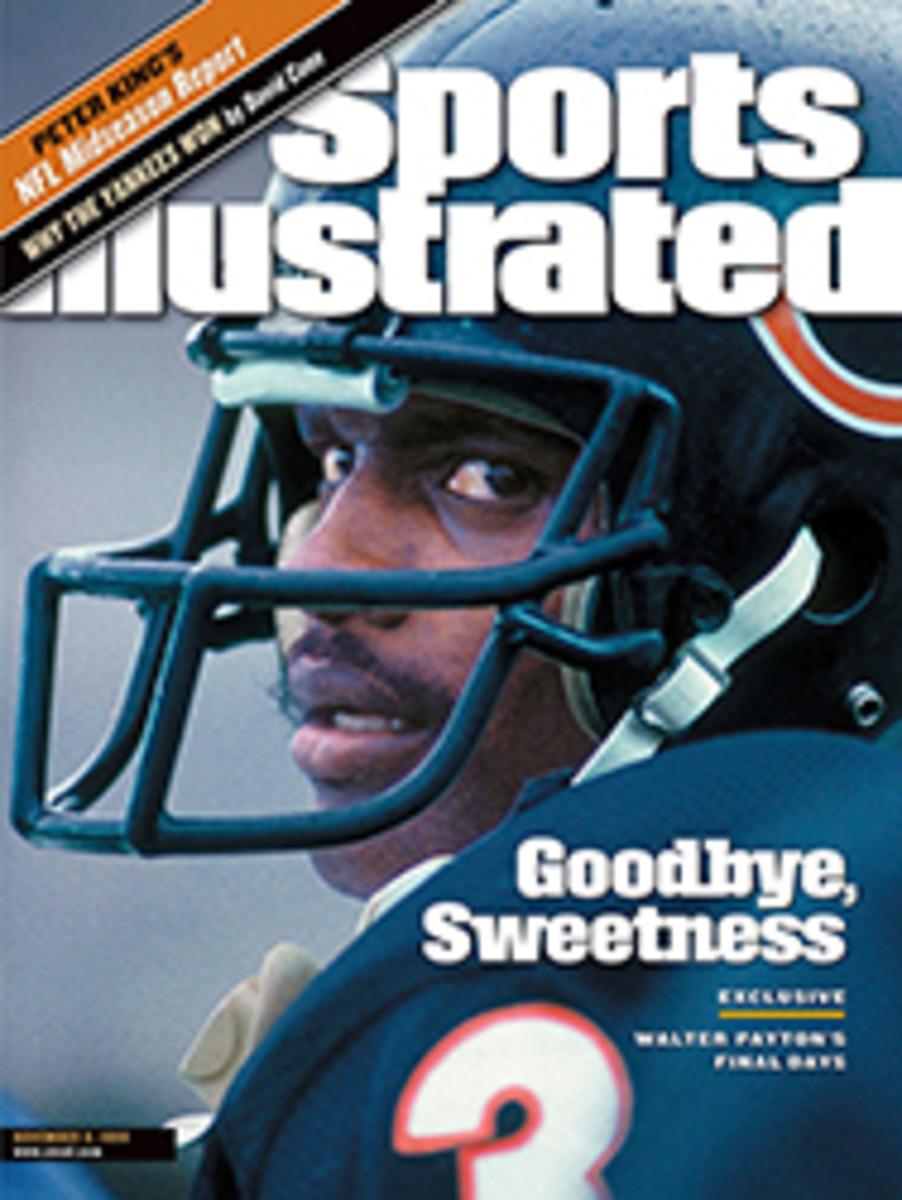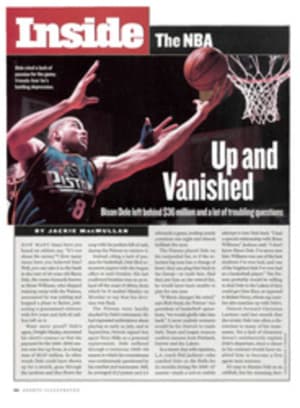
Passing Marx As the country's first pro tournament in 41 years made clear, golf in Cuba has come a long way, and has a long way to go
Even the most geopolitically naive American could come up with
three good reasons why the European Challenge tour (the overseas
equivalent of the Nike tour) should not have held its
season-ending tournament in Cuba last week. First, Cuba is not a
part of Europe. Second, Cuba is a Communist dictatorship under
Fidel Castro, and Castro would never allow such a thing. Third,
Cuba doesn't have any golf courses, does it?
Nevertheless, the Challenge tour's so-called Grand Final, with
15 spots on the European tour at stake, went forward, and on a
real course, too. The Varadero Golf Club, built above the white
sand beaches of a tourist enclave 80 miles east of Havana, was
designed by Canada's Les Furber and is a peach of a layout,
6,856 yards long. The planned gala inauguration of the course,
on Oct. 26, two days before play began, was cut short by a
sudden rainstorm just as a uniformed youth brigade was about to
present a choreographed putting and chipping demonstration for
the high-level Communist officials on the reviewing stand. But
the course received its official party sanction anyway, and, as
a kind of legitimizing gesture, the cadre of workers at Varadero
presented the officials with photographs of Fidel playing golf
with his famous comrade in arms, the Marxist martyr Che Guevara.
Apparently Castro (who had been expected to attend last week's
ceremony, but did not) has nothing against the game itself, only
its bourgeois associations. In the heady days after the 1959
revolution, he and Che spent an afternoon goofing around at the
newly liberated--and soon to be plowed under--Colina Villa Real
Golf Club, near Havana. In the pictures they seem to be having a
wonderful time. "Now I'm ready for Eisenhower," Castro is said
to have told Che after popping a particularly powerful drive.
They look just like a couple of guys in their 30s unwinding
after three busy years waging a guerrilla war against a corrupt,
U.S.-backed regime.
If the notion of booted, bearded revolutionaries beating around
the old bola seems anomalous, welcome to golf in Cuba. Among the
prizes awarded to the Cuban winners of last week's pretournament
pro-am were a small refrigerator and, for the second-place team,
house paint. Looming over the 1st tee were a giant balloon shaped
like the Pillsbury Doughboy, advertising a Cuban beer, and a
30-foot-tall statue of a worker with a golf club raised as if it
were a sickle. With a little imagination, one could hear Karl
Marx goading golfers on to maximum birdie production.
From the Challenge tour's point of view, the reason for coming
to Cuba is mundane. "During the cold-weather months the sites
available in Europe are limited," says tour director Alain de
Soultrait. Not many facilities in Spain and Portugal are willing
to give up their courses during their prime season, and the
European tour usually snatches up those that do. As a result the
Challenge tour, which this year has staged tournaments in such
unlikely spots as Kenya, Poland, Russia and Slovenia, by late
spring had still not found a home for its so-called Grand Final.
Enter Cuba in the person of Varadero's director of golf, Jimmy
Burns, who was imported from Great Britain earlier this year to
enhance Cuban golf's credibility. (For some reason the tourism
ministry's regular staff had been unable to drum up much
business touting what it called Varadero's magnificent new
"field of golf.") Burns saw the Challenge tour's plight as a
golden marketing opportunity and convinced his masters that
laying out vast sums of money (by Cuban standards) to attract a
pro tournament would do wonders for tourism.
These days, tourism is job one in Cuba. Eight years ago, when
the Soviet Union collapsed, Cubans discovered that life was
difficult without their $8 million-a-day transfusion from
Moscow. Castro reorganized the country's desperate economy to
attract foreigners to Havana and to safe new tourist enclaves
like Varadero. Only Americans were left out--under an embargo
enacted by the U.S. government in 1960, they are prohibited from
spending money in Cuba, except under special circumstances. In
1994 the tourism ministry gave the green light to build the
course at Varadero, and now at least 12 other golf projects are
in various stages of development.
By the time the deal with the Challenge tour was struck, Burns
and the 10-agency Cuban organizing committee he worked with had
less than three months to prepare for the tournament. "The first
thing we did was show people here videotapes of PGA Tour events
so they'd know what a proper tournament is supposed to look
like," Burns says. "It was all a mystery to most of them."
Amazingly, after a massive, state-directed mobilization,
everything came together. Workers built signs, boatloads of
equipment were imported, and a dozen Cuban companies (mostly
beer and rum distributors) were enlisted as sponsors. By
tournament time Varadero looked like any mini-tour site.
The only mishap, admittedly a serious one, came three weeks
before the tournament, when the greenkeeping crew killed the
grass on all the greens by accidentally watering them with toxic
human sewage. The European tour immediately sent its top
agronomist, who revived the grass enough so that during the
tournament it looked more or less green and carried putts in the
general direction of the hole, but at a snail's pace of about
six on the Stimpmeter. "Nobody over here had ever done anything
like putting on a tournament before," Burns says, "and we're
planting new grass by next year, did I mention that?"
While it's true that no one living in Cuba had ever put on a
tournament before, it's not as if Cuba lacks a golf tradition.
Ask Angel (Ampino) Rodriguez, 76. He was Sam Snead's caddie in
the Havana International Invitational in November 1958, less
than two months before Castro seized control. (The '58
Invitational was the last pro tournament held on the island.)
Snead lost in a playoff to long-hitting George Bayer, but only
because, according to Rodriguez, Snead failed to heed his advice
on the break of a five-foot putt for par on the 17th hole of
regulation. Last week, bouncing in his chair and wearing five
rings, a silver necklace, several bracelets and a watch,
Rodriguez related this story as if he had just walked off the
course. "Sa-snee, Sa-snee one up," he said with a Cuba-shaped
grin, meaning that Sam Snead would have remained a shot ahead of
Bayer with one hole to play had he trusted Rodriguez's read.
After losing, Snead acknowledged to the press that he should
have listened to his caddie--a moment Rodriguez ranks as the
highlight of his caddying career.
These days, Rodriguez still picks up the odd bag at the only
course besides Varadero still open in Cuba, the Club de Golf
Havana, a.k.a. the Diplo Club, a nine-hole track
lovingly--although poorly--maintained for foreign embassy
personnel. Precious few knowledgeable golfers are left from
prerevolutionary Cuba. Back then the country had eight courses,
the most elegant being the Havana Country Club, where Rodriguez
caddied from 1944 until it shut down for good in 1967. Today the
country club houses the nation's premier art and music school,
although it's still possible to make out where the palm-ringed
greens and raised tee boxes stood. The pool where Hollywood
starlets cavorted is empty now, and a jazz combo practices
alongside it. On the wide terrace where Sinatra crooned, a
student violinist plays Mozart. If a golf course absolutely has
to be used for other purposes, this is as good as it gets, but
none of the other old courses met such a kindly fate. Today they
are either military camps, security installations or massive,
Soviet-style housing projects.
Last week, the honor of being the first pro in Cuba in 41 years
to make a swing that counted went to Simon Hurley of
England--although no one other than Hurley seemed to be aware of
the shot's significance. "I was actually rather nervous about it
the night before," he said. To commemorate the moment, he
lavished 16 U.S. dollars on a fine Trinidadian cigar, smoked it
down to about four inches ("Any longer than that and you can't
bloody well see the ball," he explained) and blistered a drive
310 yards down the middle of the 1st fairway. "I wanted it to be
a good one," he said. Unfortunately, he hit his next shot into
the water and went on to finish 30th in the tournament, 17
strokes behind winner Stephen Scahill of New Zealand, who came
in at 11-under-par 277 and moved all the way from 16th to fifth
on the final money list.
Hurley was one of the few competitors to show any historical
curiosity about the event. Seventeen of the 41 players (only the
tour's top money-winners were eligible) were Swedes, who all
seemed to adopt the attitude of Patrik Gottfridson. "The golf,
the beach, the hotel--that's good enough for me at the end of a
long season," he said. Indolio Mendez, one of the four Cuban
instructors at Varadero, said the Challenge tour pro in his
pro-am group did not say a single word to him. Such disrespect
may not last long. Mendez, who took up the game only four years
ago, during the construction of the course, shot even-par 72 in
the pro-am and may be Cuba's best player. He has a natural swing
and a handicap of about one, even though he doesn't own a set of
clubs. "I could easily see Cuba, which is a sports-mad nation,
producing a couple of Seve Ballesteroses or Sergio Garcias in a
few years time," says Burns.
Altogether, more than 40 Cubans played in the pro-am, and any
Cuban can play the Varadero course for free--whenever there are
no paying guests waiting. "The spirit of golf anywhere is
maintained by the locals," says Jorge Duque Garcia, the profesor
de golf at the Diplo Club, "and the Cuban spirit, I believe, is
perfect for golf."
If so, the rest of the world should be warned. "Before I put my
hand on a golf club," says Mendez, "I played baseball, swam, ran
the marathon. Now I do nothing but play golf. Somehow the game
got hold of my emotions and won't let go."
Sound familiar?
COLOR PHOTO: PHOTOGRAPHS BY BOB MARTIN Garcia, one of about 40 Cubans in the pro-am at Varadero, says his people's spirit is perfect for golf.
B/W PHOTO: CASTRO AND GUEVARA: ALBERTO KORDA, COURTESY SOUTHSIDE GALLERY, OXFORD, MISS. Links to the past Golf was a revolutionary activity for Castro and Guevara (putting) in '59. Rodriguez's finest hour was with Snead.
COLOR PHOTO: PHOTOGRAPHS BY BOB MARTIN [See caption above]
COLOR PHOTO: PHOTOGRAPHS BY BOB MARTIN Local talent Mendez, one of the four Cuban instructors working at Varadero, is considered his country's best golfer.
"I could easily see Cuba, which is a sports-mad nation,
producing a couple of Seve Ballesteroses or Sergio Garcias,"
Burns says.

